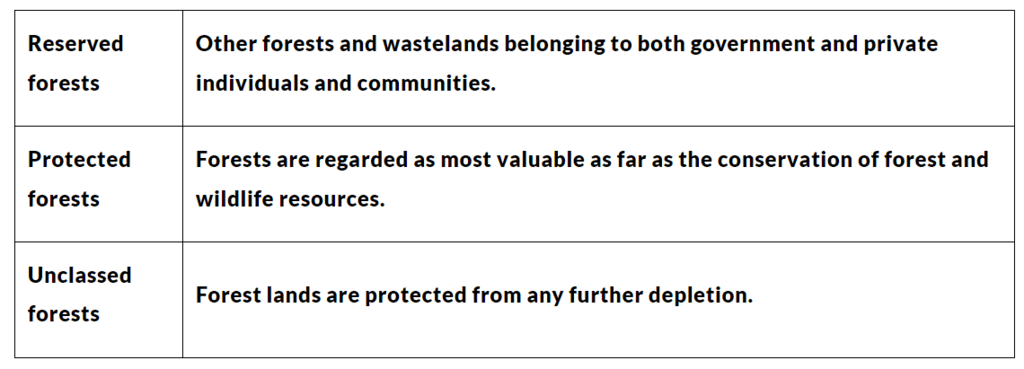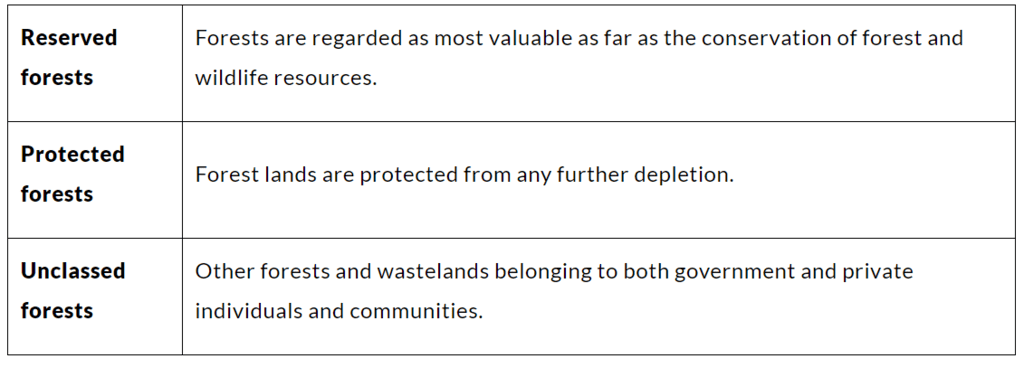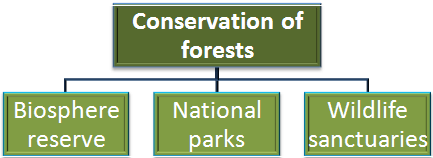NCERT Solutions for Class 10 Geography Chapter 2 - Forest and Wildlife Resources
Q1. Multiple choice questions
(i) Which of the following conservation strategies do not directly involve community participation?
(a) Joint forest management
(b) Beej Bachao Andolan
(c) Chipko Movement
(d) Demarcation of Wildlife sanctuaries
Ans: (d) Demarcation of Wildlife sanctuaries
Wildlife sanctuaries are established and maintained by the government, while all other options are examples of community participation.
Q2. Match the following.

Ans:
Q3. Answer the following questions in about 30 words.
(i) What is biodiversity? Why is biodiversity important for human lives?
(ii) How have human activities affected the depletion of flora and fauna? Explain.
Ans:
(i) Biodiversity means the inherited variation within species, the variety of species and the variety of habitats within a landscape. In other words, it refers to the variety of living organisms.
It is important because every organism has a defined role in the chain. Some organisms are consumers, producers, and decomposers. They are interdependent for their existence.
For example, if there are no decomposers, then there will be a lot of waste which will not decompose. This, in turn, will make the topsoil lose its fertility. These decomposers also give a lot of nutrients to the soil. In the absence of these organisms, there will be a loss of fertility. Thus, every single member of the biodiversity is important.
(ii) Habitat destruction, hunting, poaching, overexploitation, environmental pollution, poisoning and forest fires are factors that have led to the decline of biodiversity.
Q4. Answer the following questions in about 120 words.
(i) Describe how communities have conserved and protected forests and wildlife in India.
(ii) Write a note on good practices towards conserving forests and wildlife.
Ans:

(i) Communities across India have played a vital role in conserving forests and wildlife.
- In the Sariska Tiger Reserve, Rajasthan, villagers opposed mining by using the Wildlife Conservation Act.
- In Alwar district, villagers declared 1,200 hectares as "Bhairo dev Dakav Sonchuri" and made their own rules to protect wildlife.
- In India, nature worship has preserved many forests as Sacred Groves, which remain untouched.
- People worship trees: Mundas and Santhals worship Mahua and Kadamba, Odisha and Bihar tribals worship Tamarind and Mango, and Banyan and Peepal are also considered sacred.
- Monkeys and Langurs near temples are fed and respected, while Bishnoi villages protect Blackbuck, Nilgai, and Peacocks.
- The Chipko Movement and Joint Forest Management (JFM) highlight community efforts in forest conservation.
(ii) Good conservation practices in India include both legal measures and traditional knowledge.
- Legal steps involve the creation of National Parks, Wildlife Sanctuaries, and Biosphere Reserves to protect endangered species.
- Cultural practices like those of the Bishnoi community, who protect blackbuck and peacocks, reflect deep-rooted respect for wildlife.
- Eco-friendly movements like Beej Bachao Andolan in Tehri and Navdanya promote organic farming and seed preservation without chemical use.
- Tree-planting campaigns like Van Mahotsav raise public awareness about forest conservation.
- Revival of traditional methods and community-based conservation efforts is essential for sustainable development and protecting the environment for future generations.
- The Joint Forest Management (JFM) provides a platform to involve local communities to help restore the degraded forests. The fundamentals of JFM depend on creating village institutions that undertake the protection activities on degraded forest land, managed by the forest department. In return, these local communities are provided the right to intermediary benefits as non-timber products and share in the timber through successful protection.
|
66 videos|614 docs|79 tests
|
FAQs on NCERT Solutions for Class 10 Geography Chapter 2 - Forest and Wildlife Resources
| 1. What are the main types of forests found in India? |  |
| 2. Why are forests important for wildlife conservation? |  |
| 3. What are the threats to forest and wildlife resources in India? |  |
| 4. How can we promote conservation of forests and wildlife? |  |
| 5. What role do national parks and wildlife sanctuaries play in forest conservation? |  |






















